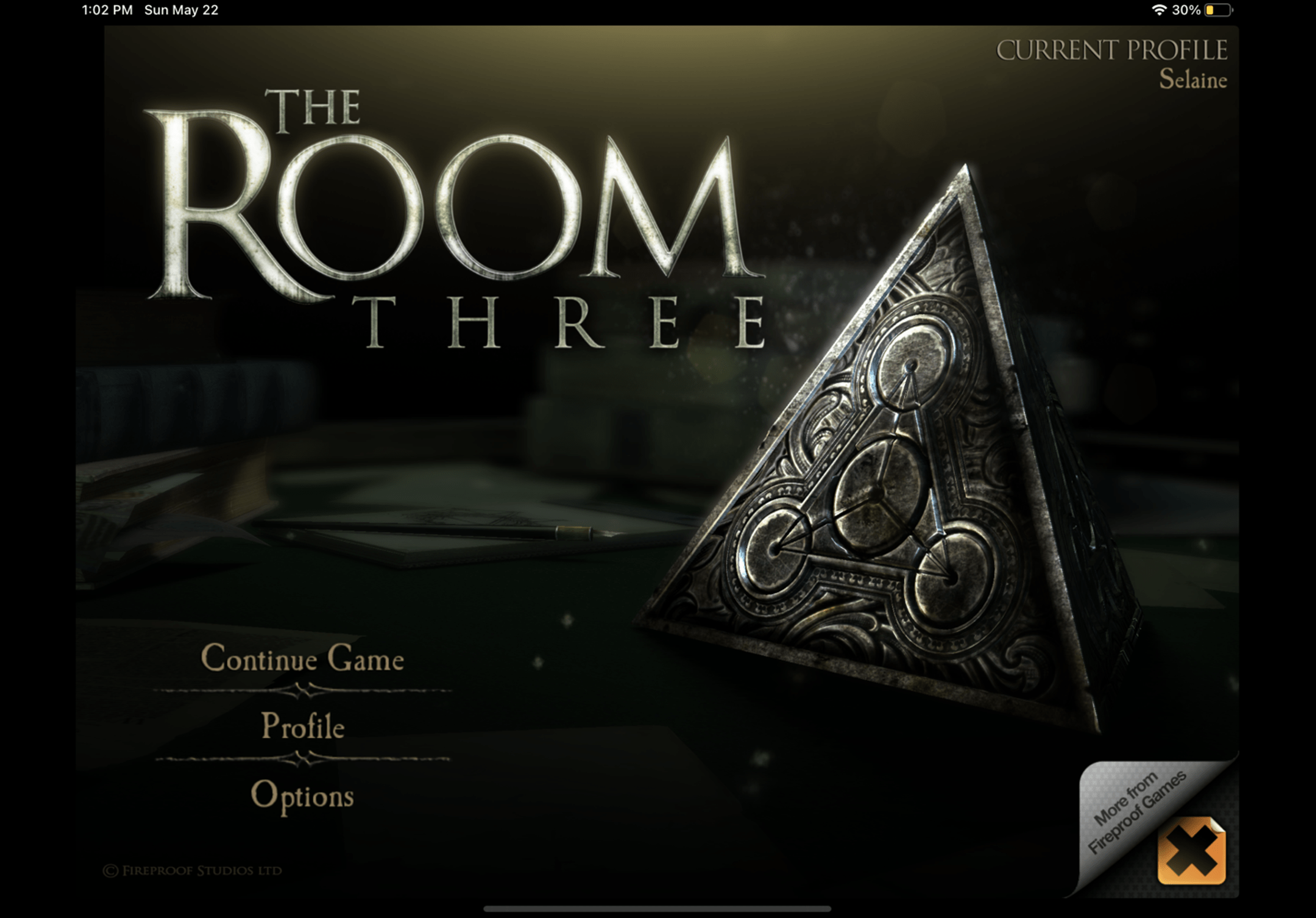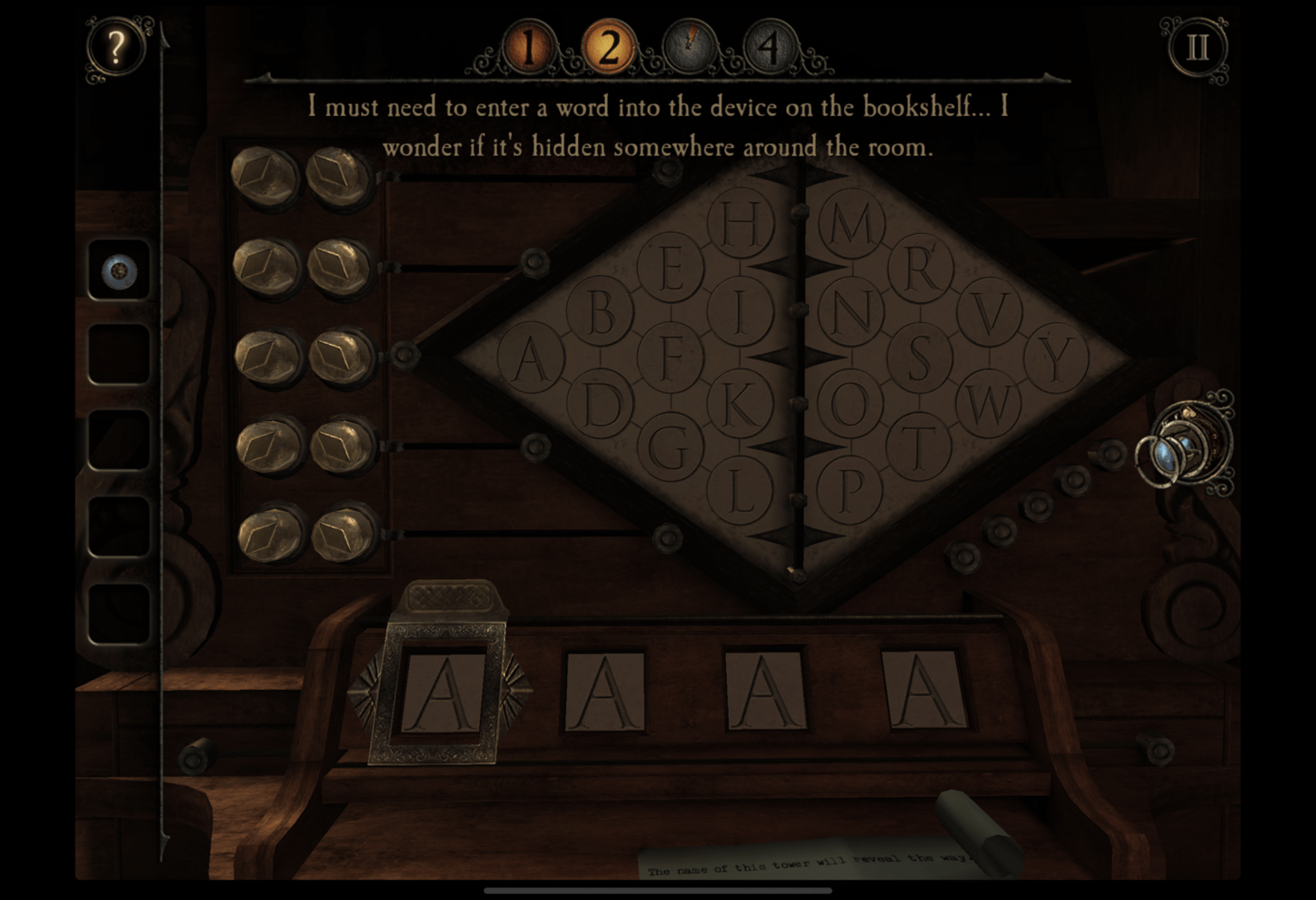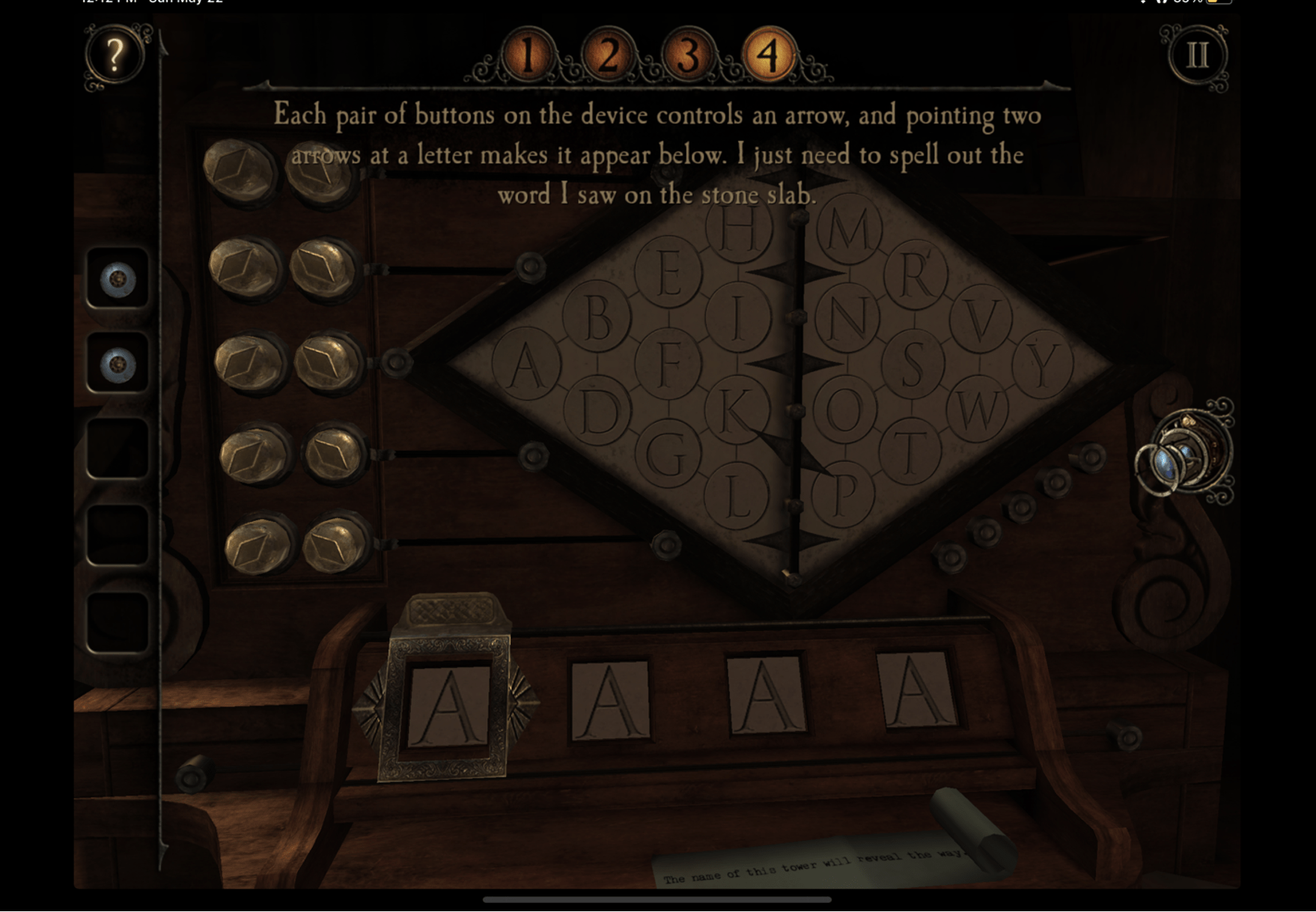For this week’s critical play, I played The Room 3. The Room is a multi-award-winning puzzle game series that originally began on mobile devices in 2012, and has since had multiple games across platforms such as PC, console, and virtual reality. The series was created by Fireproof Games, an independent game studio based in Guildford, UK. The Room 3 is the third game in the franchise and was released for iOS in November 2015, Android in January 2016, and Microsoft Windows in November 2018.

These were the formal elements of the iPad Pro version of The Room Three:
- Players: This version of the game was single player, and used a first-person perspective as you navigated the game alone solving the puzzles.
- Objectives/Goals: The goal for the first chapter (which is what I played for about an hour) was to solve all the puzzles set out for you by The Craftsmen. By solving these puzzles which involve riddles, finding and ordering items, and more, you are able to come closer to the overall goal.
- Actions: The tutorial set up allows the user to move around the room, zoom in on specific items, use a spy glass to see special signs, and keep important items in their inventory. As the player is solving the puzzles, they can also interact with the different elements in the room and move them as needed.
- Boundaries: The game itself ends when the player decides to exit the chapter, but the immersive music and sound effects allow for a smooth flow between the different puzzles.
- Path/Story: The story keeps evolving as you read scrolls left to you by The Craftsmen. Each scroll hints at the secrets behind the location the player is currently in, and the overall goals/troubles that The Craftsmen hopes to solve with the players help. Due to the setup and connections between the puzzles, there is little room left for exploration and creating your own narrative. Rather the player learns more and more about the story and the setting as they go, making their own connections through problem-solving.
- From my short play session, I didn’t pick up on any specifics in terms of design conflicts, outcome, rules, rounds, or other game elements we’ve discussed previously.
Outside of the formal elements, the puzzles were clearly constructed and the hint system was intuitive and intriguing. After a certain amount of time struggling, the first hint would be offered to you. From there, you could see how many hints you would get for this section and a timer with how long until the next hint is unlocked. The hints got more and more specific, allowing the user to continue but still try their best until they reach a final hints. Hints could also be disabled, which I’m sure many advanced-puzzle gamers would enjoy.


This has been my favorite game that we have played so far. The puzzles were very logical and the game design allowed the player to find many of the items on their own, while also challenging us to think outside of the box. I plan on continuing to play the game in the future.


